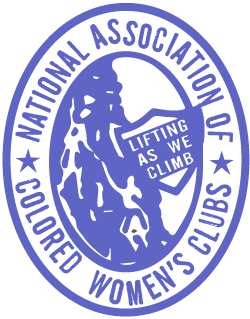
Tacoma Club History
Tacoma Club History
Cultural Awareness. Education. Health. Economics
Organizers
The Tacoma City Association of Colored Women’s Clubs, Inc. (Tacoma CWC), was organized in 1944 as a non-profit, non-political, non-sectarian organization by Bertie M. Edwards, Delores Petty, Cherry A. Jones, Lorraine A. Tillmon, Ethel E. Wood, Minnie G. Harris and Eunice G. Tillis. The Association is an affiliate of the Washington State Association, the Northwest Regional Association, and the National Association of Colored Women’s Clubs, Inc. The Association’s mission is to promote and improve the education, health, economic and cultural awareness of all citizens regardless of race or ethnic group so that lives and relationships are improved and the quality of the community is enhanced.
The Association currently hosts four active clubs; the Asberry Culture Club, the McCabe Twenty Club, the Matrons Club, and the Future Sevens Club. The Asberry Culture Club sponsors cultural events featuring arts, crafts and music. The McCabe Twenty Club sponsors health and welfare events and workshops. The Matrons Club sponsors a variety of educational events and scholarships. The Future Sevens Club engages in the development of women for leadership in government, business, industry, non-profit organizations or their community. Together the four clubs make up this historical organization and have been carrying out services within the Hilltop and surrounding community since its inception.
Site Origins
In 1955, the City Association purchased on contract a distressed three-room house at 2316 South Yakima Avenue. Through various fundraising activities the mortgage was paid off in 1963. For many years, the old building was used as a community house, primarily for supervised youth activities. However, the building was not adequate to handle the many programs the Association wished to promote. The Association started a campaign to build a new Clubhouse that would meet its needs. The campaign was kicked off with the presentation of a musical extravaganza entitled “Our Negro Heritage,” written by Eloise Butler and directed by Bertie Edwards, which traced Negro music from its African ancestry to present day times.
The musical and other fund-raising activities provided some “seed money” for the new building. We soon realized that the “seed money” was totally inadequate. It was therefore decided to solicit the aid of building supply firms, businessmen, labor organizations, other groups and members of the community to complete the project.
It Takes A Village
The response was overwhelming. Alma Giles & A.D. Barry performed the excavation; Model Lumber & Cavanaugh Lumber supplied lumber; Scofield supplied concrete; John Chapman & Rev. Robert Edwards performed the cement work; Al Body framed it to lockup; Bob Morris & John Harvey provided the electrical work; and Irving Kimbrough provided plumbing services. Students from Bates Vocational Technical School performed all the finished work while McDonalds brought them lunch daily. The wiring, plumbing supplies, floor covering, cabinets, and windows were donated by Supply Houses. The Association had originally planned to build a one story building however when St. Regis provided the same amount of Big Timber as Weyerhaeuser and B & B Glass matched Milgard and provided the same amount in windows, the decision was made to build two floors to expand capacity. Construction began in December 1969 and was dedicated June 14, 1970.
Association Building Project
Contributions
Quality Assurance
Mr. Cyril A. Edwards personally visited each business and supply house, laid out the plans and ask for the needed items. It was this level of total involvement, that would make the clubhouse a reality.
Contributers
Model Lumber
B & B Glass
Coast House Materials
Coast Steel
Far West Plywood
Scofield Concrete
Parker Paint
Basket Lumber Company
Beck Lumber
Cavanaugh Lumber Company
Weyerhaeuser
St. Regis
Dutch Boy Paint
Blind Man Thorpe
